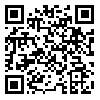Volume 8, Issue 4 (9 2013)
irje 2013, 8(4): 15-25 |
Back to browse issues page
Download citation:
BibTeX | RIS | EndNote | Medlars | ProCite | Reference Manager | RefWorks
Send citation to:



BibTeX | RIS | EndNote | Medlars | ProCite | Reference Manager | RefWorks
Send citation to:
Masoudnia E. Problematic Cyberspace Use and Risk of Depression Disorder Incidence among Adolescents in Yazd. irje 2013; 8 (4) :15-25
URL: http://irje.tums.ac.ir/article-1-5027-en.html
URL: http://irje.tums.ac.ir/article-1-5027-en.html
, masoudniae@gmail.com
Abstract: (12311 Views)
Background & Objectives: The etiology of adolescent’s depression is very complex one of variables that has been paid more attention in recent years is using modern communication technology particularly internet. The aim of this study was to determine the relationship between problematic cyberspace use and adolescent's depression disorder in Yazd city.
Methods: A total of 535 (218 male and 317 female) high school students were recruited. Internet Addiction Test (IAT) and Child Depression Inventory (CDI) were used to evaluate the presence and severity of problematic internet use and also depression.
Results: Approximately twenty-two percent adolescents (21.7%) met the criteria for problematic cyberspace use. The presence of problematic cyberspace use was significantly associated withdepression, generally (P < 0.01) and its components: Sadness/Somatic Worries (P < 0.01) Negative Self-Image/ pessimism (P < 0.01) self-blame (P < 0.01) lethargy (P < 0.01) and isolation (P < 0.01). Hierarchical multiple linear regression analysis showed that problematic cyber use, explained for 23.7% of the variance of depression.
Conclusion: Problematic cyber use is a powerful risk factor for adolescent's mood health and increase the risk of depression disorder among adolescents. Therefore, in order to prevention of negative effects of problematic cyber use on adolescents mood health, behavioral and cognitive interventions to change cyberspace use pattern is seems necessary.
Methods: A total of 535 (218 male and 317 female) high school students were recruited. Internet Addiction Test (IAT) and Child Depression Inventory (CDI) were used to evaluate the presence and severity of problematic internet use and also depression.
Results: Approximately twenty-two percent adolescents (21.7%) met the criteria for problematic cyberspace use. The presence of problematic cyberspace use was significantly associated withdepression, generally (P < 0.01) and its components: Sadness/Somatic Worries (P < 0.01) Negative Self-Image/ pessimism (P < 0.01) self-blame (P < 0.01) lethargy (P < 0.01) and isolation (P < 0.01). Hierarchical multiple linear regression analysis showed that problematic cyber use, explained for 23.7% of the variance of depression.
Conclusion: Problematic cyber use is a powerful risk factor for adolescent's mood health and increase the risk of depression disorder among adolescents. Therefore, in order to prevention of negative effects of problematic cyber use on adolescents mood health, behavioral and cognitive interventions to change cyberspace use pattern is seems necessary.
Type of Study: Research |
Subject:
General
Received: 2011/12/29 | Accepted: 2012/06/30 | Published: 2013/08/18
Received: 2011/12/29 | Accepted: 2012/06/30 | Published: 2013/08/18
Send email to the article author
| Rights and permissions | |
 |
This work is licensed under a Creative Commons Attribution-NonCommercial 4.0 International License. |





